Hey fellow gardeners! Curious about the practice of hydroponics for vegetable growing and why it’s becoming so popular among home growers? It is time to jump on the bandwagon because hydroponic gardening is a fantastic way to grow your veggies at home without needing soil. By simply using water and some basic materials found in your home, hydroponic gardening can be easy and rewarding.
Hydroponic gardening has benefits over soil-based gardening, including:
- 90% less water usage
- Reduced pesticide use
- Better control over growth conditions
- Lower risk of soil-borne diseases such as root rot and bacterial wilt
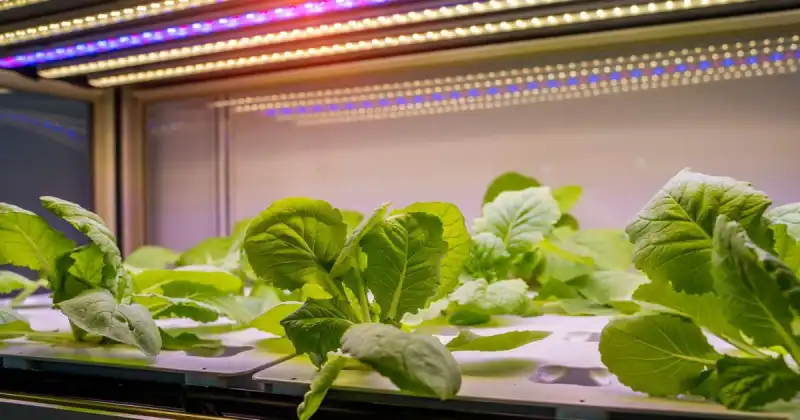
Of course, proper maintenance is essential for optimal growth, including avoiding unbalanced pH levels, accumulating algae, and root and disease issues.
In this article, I will provide a comprehensive guide on all the basics you need to know, from selecting and setting up the best hydroponic system to mastering the art of nutrient solutions and keeping your pH and EC levels balanced. I will also share some tips on harvesting your hydroponic vegetables to ensure you get the best flavor and nutritional value from your homegrown veggies. So whether you are an experienced gardener or a newbie to the growing game, get ready to discover the endless possibilities of hydroponic vegetable gardening.
Humble Highlights
- Save money by knowing what vegetables you can successfully start growing hydroponically, even if you’re a complete beginner, so you can discover which plants grow fastest and easiest for your home operation.
- Learn the 2 most popular hydroponic systems many growers use PLUS 3 additional and unique systems so you can choose which method works best for you and your family.
- Discover this super-simple STEP-BY-STEP guide on how to set up your hydroponic system from seed to harvest so you can start growing vegetables year-round!
Choosing Vegetables For Hydroponics
When starting a hydroponic garden, one of the first things to consider is which vegetables to grow. When selecting vegetables for hydroponics, several factors include plant size, nutrient requirements, and growing conditions.
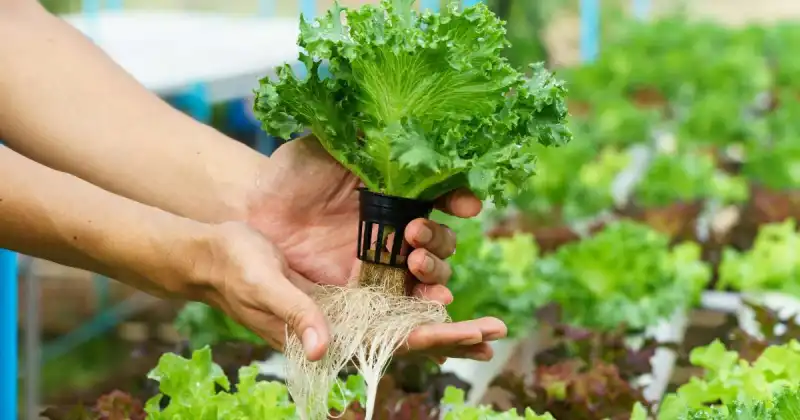
Best Vegetables To Grow For Hydroponics
For a beginner interested in hydroponic gardening, choosing suitable vegetables that are easy to grow and require less maintenance is essential. Below are some common and popular vegetable choices you could consider growing in this gardening system. 1
Leafy Greens
Leafy greens like lettuce, spinach, and kale are excellent for hydroponic gardening because they are fast-growing and have shallow rooting systems, making them well-suited for hydroponic growing. These choices mean they can be grown in various hydroponic setups, from simple wick systems to more advanced nutrient film techniques (NFT) or deep water culture systems.
Check The Lowest Prices On Lettuce Seeds Here
Additionally, leafy greens tend to be relatively low-maintenance, requiring less attention than other types of vegetables. This makes them an excellent choice for beginners who may be new to hydroponic gardening, still learning the ropes, and want to get some early wins.
Herb Plants
Herbs like basil and cilantro are also great options for hydroponic gardening, as they are easy to grow and require minimal maintenance. They can be grown in a small space and are perfect for those with limited gardening space.
Check Lowest Prices On Herb Seed Mixes Here
For example, in nutrient film hydroponic systems, or NFT, a thin film of nutrient solution flows over the roots of the plants, nourishing them with the necessary nutrients. Herbs like basil and cilantro, which have shallow roots, can easily absorb these nutrients and moisture from the thin film that flows through them.
Deep water culture systems (DWC) involve suspending the plants in a nutrient-rich water solution, allowing the roots to grow directly into the solution. This system is also an excellent choice for herbs as it provides enough moisture and nutrients for these plants to thrive, and they can be easily transplanted into net pots, which offer greater plant structural support.

Fruit-Bearing Plants
Tomatoes, peppers, and cucumbers are fruit-bearing plants that can also develop well within hydroponic systems but require more attention and maintenance than leafy greens and herbs. However, these plants need more light and nutrients to produce fruit, meaning the hydroponic system must provide proper growth and maturation conditions. 2
For fruit-bearing plants, deep water culture and nutrient film technique systems are some of the most popular options, as they provide ample water and nutrient supply to the roots of your blossoming plants. As mentioned above, in a deep water culture system, the plant’s roots are suspended in a nutrient-rich water solution, while in a nutrient film technique system (NFT), a thin film of nutrient solution flows over the roots.
Check Lowest Prices On Tomato Seeds Here
Unlike herbs and leafy greens, fruit plants require more space, deeper channels or containers, and more light to aid photosynthesis. They also need frequent nutrient replenishment as they consume more nutrients for the subsequent yields they produce. Thus, gardeners should choose a hydroponic system providing sufficient light, nutrients, and space to accommodate their growth.
Factors To Consider When Choosing Vegetables
There are several factors to consider when choosing vegetable plants for your hydroponic setup, including:
- Plant Size
- Nutrient Requirements
- Growing Conditions
- Time Of Maturity
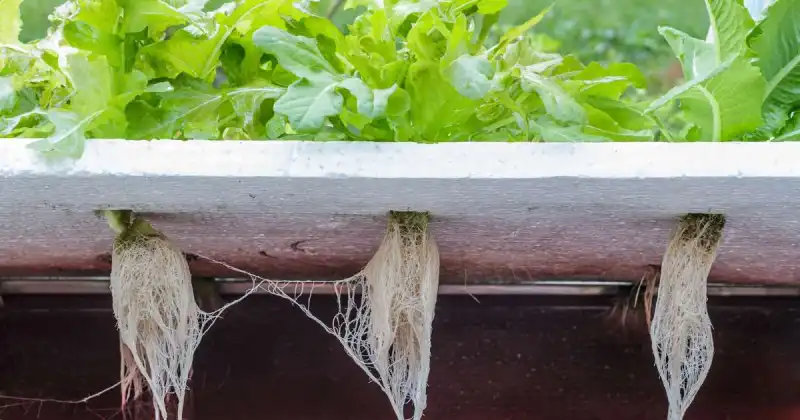
Let’s look at these elements to help get you growing and succeeding in your hydroponic system.
Plant Size
The size of the plants you’ll grow is important, as larger plants may not fit within smaller hydroponic systems. Examples of compact plants best suited for smaller hydroponic systems include herbs like basil and cilantro, leafy greens like lettuce and spinach, and smaller fruits like strawberries.
Check Lowest Prices For Strawberry Seeds Here
Nutrient Requirements
The plant’s nutrient requirements must also be considered, as different vegetables require different types and amounts. For example, leafy greens like lettuce and spinach require higher nitrogen levels, while fruiting plants like tomatoes and peppers require more potassium and phosphorus.
Growing Conditions
Growing conditions of some vegetables, like leafy greens and herbs, require less light and can tolerate some low-light conditions. Conversely, other plants, like tomatoes and peppers, need more light to thrive. Temperature is also essential, as some vegetables prefer warmer or cooler growing conditions.
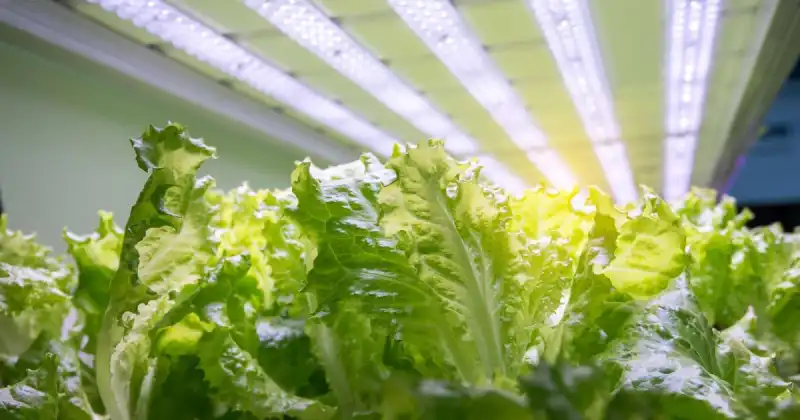
Time Of Maturity
Regarding maturity time, leafy greens like lettuce and spinach can be harvested relatively quickly, typically within a few weeks of planting. Fruiting plants like tomatoes and peppers, on the other hand, may take several months to mature and produce fruit. It’s crucial to consider the time to maturity when selecting vegetables for hydroponics and ensure they fit within your desired harvest timelines. 3
Common Mistakes To Avoid
Overfeeding Or Underfeeding Plants
Generally, a good starting point for a nutrient solution is an EC level (electrical conductivity, which measures the solution’s strength) of 1.2 to 1.5 and a pH level between 5.5 to 6.5. Flushing the system with plain water every few weeks is recommended to prevent nutrient buildup and good practice to help keep your plants and system healthy. 4
Check Lowest Prices For Waterproof Hydroponic Water Testing Meters Here
Poor Water Quality
Water quality can significantly affect plant growth. Use distilled or filtered tap water free of harmful chemicals and minerals, giving your greens premium quality.
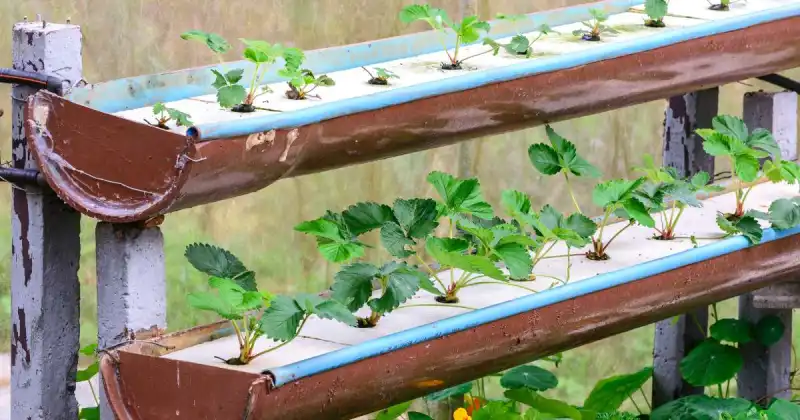
Neglecting pH Levels
Remember, pH levels can also greatly affect hydroponic plant growth. Monitoring and adjusting pH levels regularly ensures optimal plant health and helps prevent disease and stunted growth. The optimal pH range for most hydroponic vegetables is between 5.5 and 6.5. However, the precise pH range may vary depending on the vegetables you grow.
Check Lowest Prices On pH Pens Here
Crowding Plants
Overcrowding can happen when plants are placed too close together, leading to their leaves and stems touching and blocking air circulation. Crowding can also occur when too many plants are grown in a small space, limiting each plant’s access to light, nutrients, and water.
Neglecting To Clean The System
A dirty hydroponic system can lead to disease, pest infestations, and, ultimately, a loss of plants if the problem persists unchecked. It is essential to clean and maintain your system to prevent any issues regularly. Remember, as the humble gardener constantly checks and observes the backyard garden for problems, so does the hydroponic grower for their system.
Check Lowest Prices On Hydroponic Books Here
Here’s a great video I found that explains the art of hydroponics, the growing process, and the materials you’ll need. Remember, understanding the hydroponic process by starting small is a prudent first step in hydroponics. Once you have some early wins, consider expanding your system and the variety of vegetables you’ll grow.
Check Lowest Prices On Nutrient Density EC Meters Here
Two Popular Hydroponic Systems
There are several types of popular hydroponic systems. The nutrient film technique (NFT) and the deep water culture system (DWC) are among the most common hydroponic systems that vegetable gardeners prefer as they are easier to set up, monitor, and maintain than other, more complex methods.
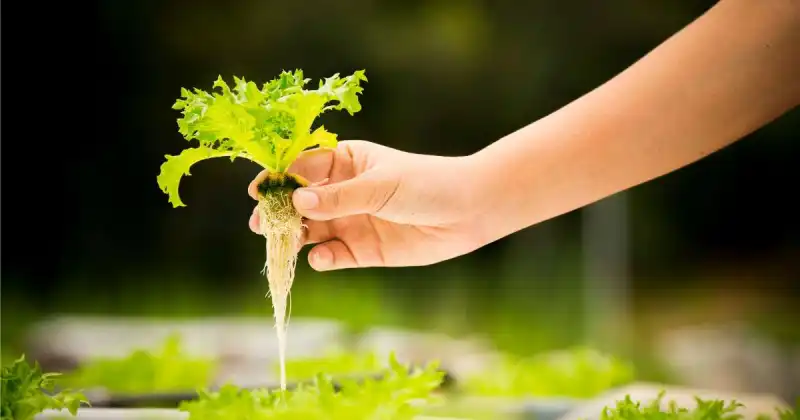
Nutrient Film Technique (NFT)
In NFT hydroponic systems, a thin film of nutrient solution nourishes the plants’ roots without needing soil. The nutrient solution flows over the roots in a thin film, providing adequate support for plant growth.
The nutrient solution is delivered in a timed cycle, typically involving 10 minutes of flow followed by 5 minutes of drainage, to avoid waterlogging and ensure proper nutrient uptake. The specific timing of each cycle may vary depending on the plant species and the requirements of the particular NFT system in use. 5
Advantages
- The film ensures your roots are not suffocated.
- Low-waste recirculating design, which helps conserve water and nutrients.
- NFT systems require minimal to no growing media, like soil.
Disadvantages
- A malfunction in the water pumps can ruin the entire crop, costing you money and time – not to mention frustration.
- Roots can overgrow and intertwine along the channel, potentially blocking the flow of nutrients to the plants.
Deep Water Culture System
The deep water culture system, or DWC for short, is a passive hydroponic system that does not require a water pump to move the nutrient solution around. Instead, the air pump is responsible for maintaining the oxygenation of the water and ensuring the nutrient solution circulates around the roots.
In deep water culture systems, plants are placed in net pots, with their roots hanging down into the water below. An air pump and air stone help oxygenate the water to ensure the roots receive the necessary nutrients and oxygen for growth.
Advantages
- Easy maintenance.
- Low cost.
- Ability to grow a wide variety of plants.
Disadvantages
- DWC systems are not suitable for all types of plants.
- The lack of a water pump means that the system can stagnate.
- Algae may accumulate if not adequately monitored and maintained.
Other Hydroponic Systems: Ebb And Flow, Wick System, Drip System
Three other familiar hydroponic systems growers may opt to choose include:
- Ebb And Flow
- Wick System
- Drip System
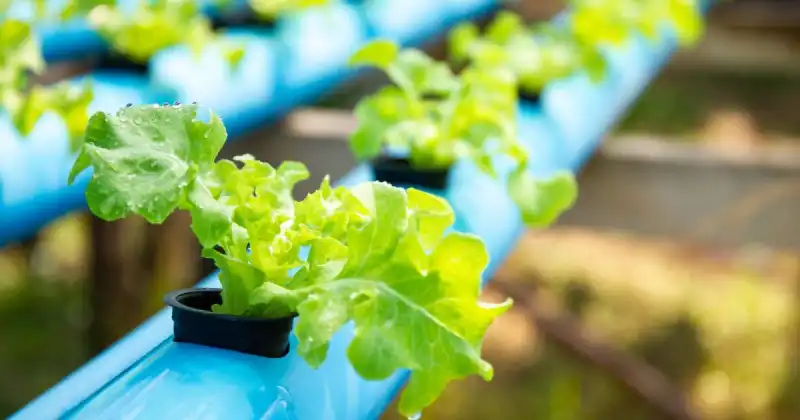
Ebb And Flow
Like the changing ocean tides, ebb and flow systems periodically flood the plants with nutrient-rich water, allowing the liquid to drain systematically. The plants are typically held in a container or tray along with their growing medium, and a pump automatically floods the tray with water.
Wick System
This hydroponic system is relatively simple and involves using a wick made of felt or rope to transport nutrient solution from a reservoir to the plants’ roots. It is ideal for small spaces and is relatively inexpensive and easy to set up. However, wick systems are unsuitable for larger areas and require proper installation to prevent root suffocation. 6
Drip System
In drip systems, plants are held in a separate channel and are fed nutrient solution through a drip line or emitter. These systems are efficient regarding water and nutrient usage, providing more control over the feeding schedule. However, drip systems require continual attention in monitoring pH and nutrient levels and to ensure the system doesn’t clog, which they are known to do.
Setting Up A Hydroponic Vegetable Garden
Although setting up a hydroponic system may sound complex and intricate, it doesn’t necessarily need to be. Once you’ve selected the hydroponic system for your needs, you’ll want to obtain the necessary equipment and components, set up your system correctly, maintain its operation by amending your technique, and adjust the nutrient density and pH levels to ensure your system operates appropriately.
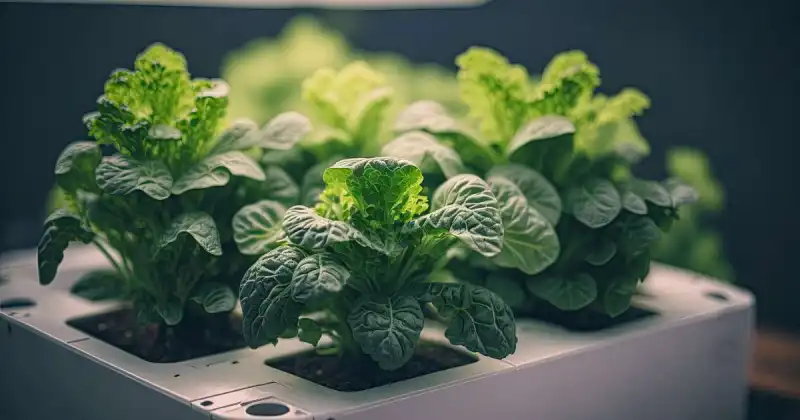
Gather The Necessary Equipment
To correctly set up a hydroponic system for vegetable gardening, you must have the right equipment to ensure optimal plant growth. Below are some necessary tools and equipment you will need and their uses:
- Reservoir: This container holds the nutrient solution for the plants. It should be large enough to hold and control the amount of nutrient solution needed for your plants to grow.
- Water pump: Pumps distribute and circulate the nutrient solution from the reservoir to the plants. The pump you select should be appropriately sized for the hydroponic system you are using. Pumps that are too large for your hydroponic system push too much water and nutrient solution too fast, while smaller pumps won’t have the power to propel enough.

- Timer: Timers help regulate the amount of time the water pump operates. This process is critical to your operation as you’ll want your plants to receive the correct nutrient solution.
- Net pots: These pots provide structural support, help hold the plants in place, and allow the roots to grow through the bottom mesh into the nutrient solution. Without support, your plants will become top-heavy, fall over, and displace their roots from the nutrient solution. 7
- Growing medium: Like the net pots above, selecting the right growing medium supports the plants and helps them stay upright in the hydroponic system. Examples of various growing mediums include rockwool, perlite, clay pellets, and coconut coir.
Check Lowest Prices On Clay Pellets Here
- Nutrient solution: This solution contains all the essential nutrients the plants need to grow. It is crucial to choose a nutrient solution appropriate for the type of plants being cultivated.
- Distilled water: Distilled water helps dilute the nutrient solution to the appropriate strength. It is important to use distilled water to prevent contaminants from affecting the nutrient solution and disrupting the development of your plants.
- Air pump and air stone (for some systems): These provide oxygen to the nutrient solution circulated within your system, which is necessary for healthy plant growth. Examples of hydroponic systems that require an air pump and airstone include deep water culture (DWC) and nutrient film technique (NFT).
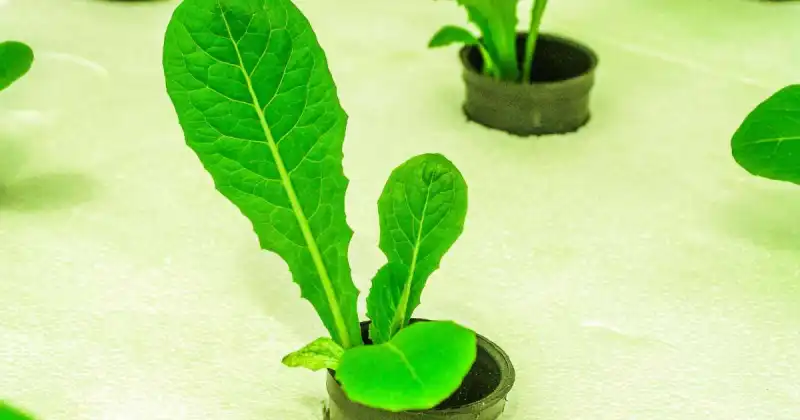
Basic Steps To Set Up Your Hydroponic Vegetable Garden
After gathering the necessary equipment and selecting your desired vegetables for hydroponic gardening, it is time to implement your plans! The following are the fundamental steps for setting up your hydroponic vegetable garden, depending on your chosen hydroponic system.
Step 1
Choose the type of hydroponic system that best suits your needs. Due to their fast and manageable growth, I recommend leafy greens and herbs for first-time hydroponic growers.
Step 2
Select a location with good ventilation, lighting, access to water, electricity, and temperature control via a dehumidifier. Many growers utilize their garage or shed space for their hydroponic operations.
Check Lowest Prices For Dehumidifiers Here
Step 3
Select your seeds and determine your growing conditions. Rockwool is an inexpensive and porous fibrous material that provides seeds good protection, structural support, and access to oxygen and water as they germinate. Light can be generated with indoor grow lights, like LED options, or a sunny windowsill. Remember, seeds need lots of good, direct sunlight to grow. Once your seeds reach 3 to 4 inches tall, you can transfer them into your hydroponic system. 8
To run a successful hydroponic system, you’ll need healthy seeds and an exemplary process for their germination. This video explains how simple and straightforward the seed-starting process is for new and experienced gardeners alike.
Check Lowest Prices On Rockwool Here
Step 4
Set up the reservoir and water pump.
Step 5
Set up the timer to regulate the water flow.
Step 6
Add the growing medium to the net pots and plant the seedlings within.
Step 7
Incorporate the nutrient solution into the reservoir and adjust the pH level accordingly. Your nutrient solution should have guidelines for usage and proper pH levels. You’ll need some test pH test strips or a digital testing device to easily monitor your levels to ensure they stay within an optimum range.
Check Lowest Prices On pH Test Strips Here
Step 8
Turn on the water pump and air pump (if applicable). As mentioned, this step depends on the hydroponic system you use.
Step 9
Monitor the system regularly to ensure proper nutrient levels and water flow. You’ll also want to watch your maturing plants to ensure disease, pests, or root rot doesn’t develop.
Maintaining The Hydroponic Vegetable Garden
Nutrient Solutions
Nutrient solutions are essential in hydroponics because they provide the necessary nutrients for plant growth without soil. Common types of nutrient solutions include pre-mixed solutions and custom-formulated solutions.
Check Lowest Prices On Hydroponic Nutrient Solutions Here
To mix nutrient solutions, growers must first calculate the desired nutrient concentration and carefully measure and mix the necessary nutrients.
For example, if you want to create a nutrient solution with an N-P-K (nitrogen-phosphorus-potassium) ratio of 3-1-2 for their plants, you would need to measure out the appropriate amounts of nitrogen (N), phosphorus (P), and potassium (K) nutrients. Mix these nutrients with water to create the desired concentration.
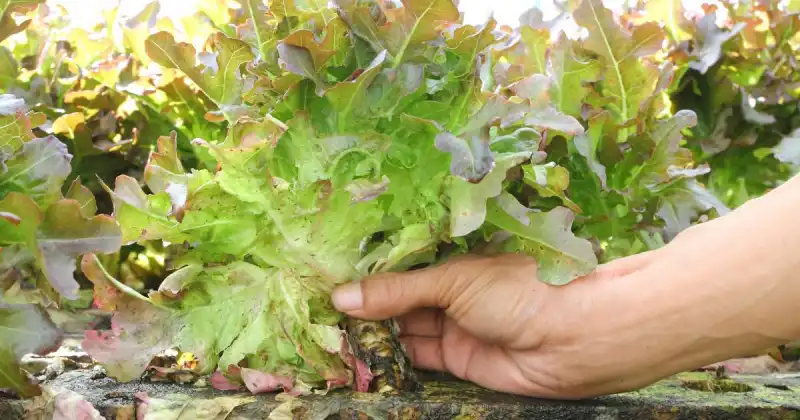
pH And EC Levels
pH and EC (electrical conductivity) levels are essential in hydroponics because they affect nutrient availability and uptake. The ideal pH range for hydroponics is between 5.5 and 6.5, and a typical EC range is between 1.2 and 2.0 mS/cm. To measure and adjust pH and EC levels, growers can use a pH meter and an EC meter and add pH up or down or nutrient solution as necessary.
Ideal Grow Lights
Lighting is crucial in hydroponics because plants need lots of it for photosynthesis. Some grow lights include fluorescent, LED, and high-pressure sodium lights.
When choosing the proper lighting for hydroponics, you must consider factors such as the type of plants, the growth stage, and the size of the growing area, as discussed earlier.
Check Lowest Prices On Indoor Grow Lights Here
Temperature And Humidity Control
Temperature and humidity control are important components in hydroponics because they can affect plant growth. Similarly, if temperature and humidity become unbalanced for too long, the potential risk of disease and pest damage may occur. 9
Techniques for controlling temperature and humidity include ventilation, air conditioning, humidifiers, and dehumidifiers.
Cool-season crops like broccoli, cabbage, lettuces, endive, peas, spinach, and green onions prefer cooler temperatures, around 60-70°F during the day and 50-60°F (10.00°C) at night. To avoid harming plants, temperatures should never drop below 40°F (4.4°C).
Quick Summary
- Check the nutrient levels and adjust them as needed.
- Monitor the pH level regularly and adjust it if necessary.
- Check the water level in the reservoir and top it off as needed.
- Monitor your plants for any sign of disease or pest invasions and then address them promptly so they don’t spread throughout your system.
- Clean your hydroponic system regularly to prevent the buildup of algae or other contaminants.
- Replace the nutrient solution every 1-2 weeks, depending on your selected method and system, along with the grown plants.
Harvesting And Yield
Harvest timing varies depending on the plant being grown, but there are some general signs that a plant is ready to be harvested. For example, for leafy greens like lettuce, spinach, and kale, the outer leaves can be harvested as soon as they reach a usable size, and the plant will continue to produce new leaves for future harvests. For fruiting plants like tomatoes, peppers, and cucumbers, the fruit should fully ripen on the vine before harvesting.

As for harvesting techniques, it is best to use clean tools and handle the plants gently to avoid damaging them. For leafy greens, I recommend cutting the outer leaves near the stem’s base with scissors or pruning shears to prevent any unnecessary ripping or tearing of the remaining plant. For fruiting plants, on the other hand, it is best to use a pair of sharp pruning shears to cut the fruit from the vine, again being careful not to damage the surrounding plant. 10
Check Lowest Prices For Pruning Shears Here
Benefits Of Hydroponic Gardening
Hydroponic gardening allows you to grow plants faster and more efficiently than traditional gardening methods. It offers a range of benefits compared to conventional soil-based gardening, including:
- Faster plant growth and abundant yields
- Saves space
- Conserves water
- Fewer pests and diseases
- Provides better control over your crops
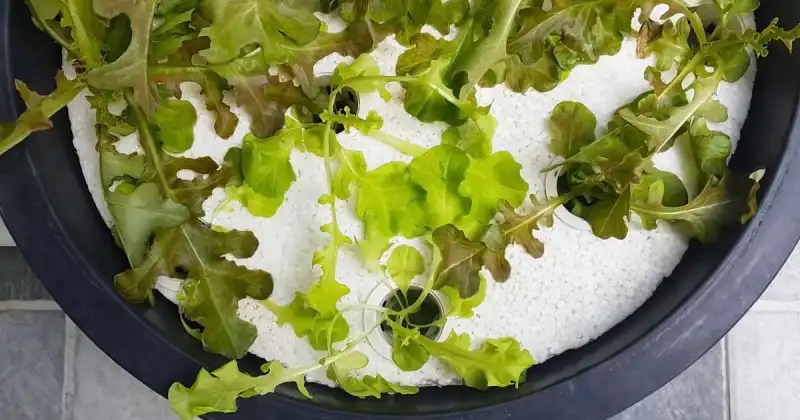
Let’s look at each of these hydroponic benefits to help you determine if hydroponic gardening is the right choice for you.
Faster Growth And Higher Yields
Plants can grow up to 50% faster in a hydroponic system, with 30% or more yields than traditional gardening methods. That’s pretty impressive! However, faster growth rates and higher yields occur because the plants themselves don’t have to expend energy on growing roots to search for nutrients in the soil, as they would in traditional gardening methods.
Additionally, hydroponic systems often use LED grow lights, which provide the perfect spectrum of light for plants to grow, further boosting their growth and yield.
Space Efficiency
Hydroponic systems can be set up in smaller spaces, such as balconies or indoor areas, allowing for more efficient use of space. This means more plants can be grown in a smaller space, making it an excellent option for those with limited space, such as urban growers or apartment dwellers.
Water Conservation
Hydroponic systems can use up to 90% less water than traditional gardening methods because the water is recycled and reused. The water you incorporate into your hydroponic system is recirculated and reused, whereas traditional gardening methods require more water, which is lost through evaporation or runoff. Moreover, hydroponic systems utilize water more efficiently because it’s channeled and delivered directly to your plant’s roots.
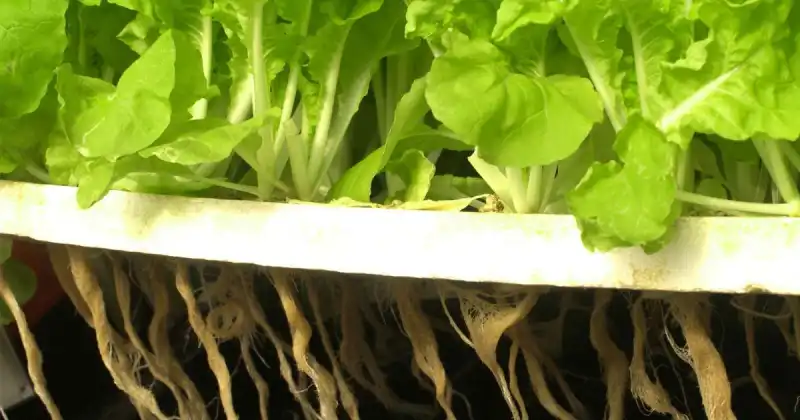
Fewer Pests And Diseases
Since hydroponic systems are considered closed or contained systems, pests, and diseases are less likely to affect the plants, reducing the need for pesticides. This reduces the need for pesticides and other chemical treatments, making it safer and more environmentally friendly. 11
Better Control Over Growing Conditions
In a hydroponic system, the grower has more control over factors like temperature, humidity, and nutrient levels, which can lead to healthier and more productive plants. As plants are grown in ideal environments and delivered the appropriate amounts of nutrients and oxygen regularly, they tend to be healthier and more productive over their lifecycle than their backyard counterparts.
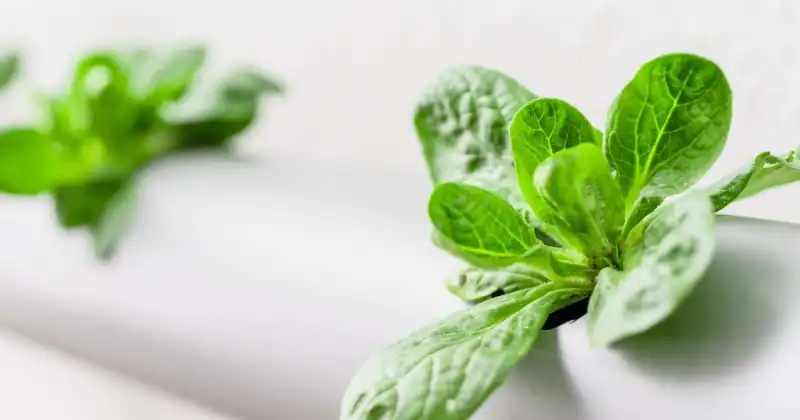
Conclusion
Hydroponic gardening offers many benefits over traditional soil-based gardening. From increased yields and faster growth to year-round growing and greater control over growing conditions, hydroponics provides an efficient and customizable way to grow your fresh produce.
Similarly, a hydroponic garden uses less water, reduces pesticide use, and lowers the potential risk of disease and pests, making this popular practice practical, sustainable, and environmentally friendly.
With various hydroponic systems available, including nutrient film technique (NFT), deep water culture (DWC), ebb and flow, wicking, and drip systems, there are plenty to choose from, as each has unique advantages and disadvantages. With all of these options, there’s bound to be a system that fits your needs, budget, and goals.
And once you’ve determined the best hydroponic setup, you’ll need to obtain the requisite materials, construct it appropriately, and maintain your operation accordingly. So, don’t wait any longer. There’s no better time than the present to start hydroponic gardening today and enjoy a bountiful harvest of nutritious and delicious produce right at your fingertips, any time of the year!
Do you currently enjoy growing vegetables hydroponically? We’d love to know your success story. Be sure to meet us in the comments below and spill!
SOURCES
- Wikipedia – Hydroponics
- University Of Florida – Hydroponic Vegetable Gardening
- National Park Service – Hydroponics: A Better Way To Grow Food
- Penn State University, Extension – Planting And Growing
- ScienceDirect – Nutrient Film Technique
- National Library Of Medicine, National Center For Biotechnology Information – Hydroponic Solutions For Soilless Production Systems: Issues And Opportunities In A Smart Agriculture Perspective
- University Of Nevada, Reno – Hydroponics: A Brief Guide To Growing Food Without Soil
- United States Agricultural Library, Department Of Agriculture – Hydroponics
- Backyardgardenlover.com – Best Grow Room Temperature And Humidity
- Hydropros.com – Hydroponic Systems & What’s Right For You
- Foodgardening.mequoda.com – How To Avoid 7 Hydroponic Pests And Diseases

